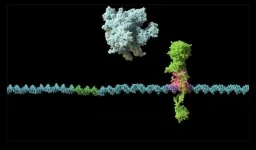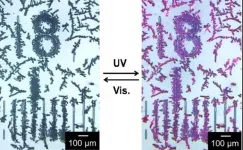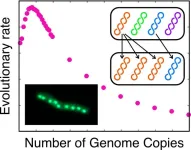(Press-News.org)
Silicon (Si) is one of the most abundant elements on Earth, found in large quantities in soil. While Si is not essential for land plants, many plants, such as rice and grasses, have used Si to develop powerful defense mechanisms against various environmental stresses. Si accumulates in plant leaves and aerial organs as amorphous silica (SiO2), which offers protection against pathogens, herbivores, and environmental challenges like drought. Understanding the processes through which plants manage this beneficial element could enhance crop resilience and productivity, especially in the face of climate change.
In a breakthrough study, a team of researchers led by Dr. Naoki Yamaji, from the Institute of Plant Science and Resources, Okayama University, Japan, has uncovered a key signaling protein, Shoot-Silicon-Signal (SSS), that regulates Si uptake, distribution, and accumulation in rice and other grasses. Their research focused on Oryza sativa, a rice variety known for its high Si accumulation, and relies heavily on Si for healthy growth and productivity. The team consisted of Dr. Namiki Mitani-Ueno and Dr. Jian Feng Ma from the Institute of Plant Science and Resources, Okayama University, Japan. This study, published online in Volume 15 of Nature Communications on December 27, 2024, sheds light on the evolution of SSS in rice crops as a defense mechanism. Dr. Yamaji says, “We have been studying Si nutrition in plants and have identified several Si transporters for Si uptake, distribution, and accumulation. Now, we have researched the signaling protein.”
SSS is an unusually exceptional homolog of florigen, a hormone that regulates flowering in plants. While florigen plays a role in plant development, SSS plays a crucial role in regulating Si. The researchers discovered that when Si is available, the level of SSS protein in the plant drops, signaling the plant to adjust its Si intake accordingly. They used wild-type (naturally occurring) rice variety, modified (mutated) cell lines of the SSS gene, and a transgenic cell line of rice containing genes of SSS protein and green fluorescent protein.
The team utilized multiple biotechnological advancements to create mutated and transgenic cell lines. They then performed various analyzes on the expression of the SSS gene and the presence of SSS protein in various parts of the plant. In rice plants with mutated SSS gene, Si uptake from the roots was significantly reduced, causing a drop in the grain yield. This highlights the important role of SSS in regulating Si absorption and accumulation. Also, the scientists found that in leaves, the SSS gene is expressed in the phloem—a tissue that helps in the transportation of food in plants.
The findings have exciting implications for agriculture. By using SSS protein as a marker, scientists can better estimate the Si requirements of a plant and consequently optimize Si fertilization. This could result in more resilient crops that are better equipped to cope with environmental stresses, ultimately boosting agricultural productivity and sustainability. Dr. Yamaji emphasizes, “Si accumulation in plants alleviates various biotic and abiotic stresses. Therefore, optimization of Si makes more stress-tolerant crops. It contributes to the productivity and sustainability of agriculture”.
Si accumulation and regulation also help the plant to adapt to the environmental conditions. Though Si is not considered an essential element for plant growth, the study proves its indispensable role as an adaptive element. Dr. Yamaji adds about the potential implications of the study, “This discovery opens up new possibilities for improving Si management in crops, particularly in regions where Si availability in soil is lowered by cultivation. By better understanding how plants regulate Si, we can design more efficient fertilization strategies and enhance crop resilience globally.”
As climate change continues to threaten agricultural stability, improving Si management could become a key strategy for ensuring a more resilient food supply. Dr. Yamaji concludes, “Si is not just an element that plants accumulate, it’s an adaptive tool that helps them thrive and survive. By harnessing the power of Si, we can help ensure a more sustainable and productive agricultural future.”
About Okayama University, Japan
As one of the leading universities in Japan, Okayama University aims to create and establish a new paradigm for the sustainable development of the world. Okayama University offers a wide range of academic fields, which become the basis of the integrated graduate schools. This not only allows us to conduct the most advanced and up-to-date research but also provides an enriching educational experience.
Website: https://www.okayama-u.ac.jp/index_e.html
About Associate Professor Naoki Yamaji from Okayama University, Japan
Dr. Naoki Yamaji is an Associate Professor at the Institute of Plant Science and Resources, Okayama University, Japan. He has published over 200 research papers, 40,000 reads and more than 25,000 citations. He was honored with the Young Scientists’ Prize in 2017, a prestigious national recognition. His research primarily focuses on plant physiology, rice, plant biotechnology, plant environmental stress physiology, and plant molecular biology. Additionally, Dr. Yamaji’s work delves into plant molecular biology, aiming to enhance crop resilience and productivity through a deeper understanding of plant responses to environmental challenges.
END
An international collaboration has achieved an important breakthrough in understanding the genetic mechanisms that allow bacteria to build resistance to drugs.
Bacteria have multiple defence mechanisms they can use to build resistance to antibiotics, one of the major problems facing public health globally.
One of these mechanisms involves plasmids, small DNA molecules in bacterial cells, which have their own independent genome and carry antibiotic resistance.
If we can work out the roles plasmids play inside bacteria, then we can use the information to develop a new generation of therapeutics that can target drug resistant infections.
John ...
Proteins are life’s engines, powering processes like muscle movement, vision, and chemical reactions. Their environments—water, lipid membranes, or other condensed phases—are critical to their function, shaping their structure and interactions.
Yet many modern protein-design methods, including AI-based tools, often ignore how these surroundings influence proteins. This gap limits our ability to create proteins with new functions, slowing progress in medicine and bioengineering.
One group of proteins working in such specialized ...
Bethesda, MD (Jan. 22, 2025) — The American Gastroenterological Association (AGA) has unveiled an updated clinical practice guideline in Gastroenterology addressing the prevention and management of hepatitis B virus reactivation (HBVr) in patients on immunosuppressive drugs. The use of immunosuppressive drugs has increased significantly since 2013, according to data gathered via the National Health Interview Survey.
New tailored risk assessments can help health care providers and patients navigate challenges posed by the newer immunosuppressive therapies used for oncology, rheumatology, and gastrointestinal diseases. As the ...
Adults who have been diagnosed with attention deficit hyperactivity disorder (ADHD) may be living shorter lives than they should, finds a world-first study led by UCL researchers.
The research, published in The British Journal of Psychiatry, analysed anonymised primary care data from 30,029 adults across the UK with diagnosed ADHD.
They then compared this group with 300,390 participants without ADHD, who were matched by age, sex, and primary care practice.
The researchers found an apparent reduction in life expectancy for men with diagnosed ADHD of between 4.5 and 9 years, and between 6.5 and 11 years for women.
Senior author, ...
The fossilised neck bone of a flying reptile unearthed in Canada shows tell-tale signs of being bitten by a crocodile-like creature 76 million years ago, according to a new study published today [23 January] in the Journal of Palaeontology.
The juvenile pterosaur vertebra, discovered in Dinosaur Provincial Park, Alberta, bears a circular four-millimetre-wide puncture mark from a crocodilian tooth. Researchers from the Royal Tyrrell Museum of Palaeontology (Canada), the University of Reading (UK) and the University of New England (Australia) say this rare evidence provides insight into predator-prey dynamics ...
The results of cowslip observations carried out with the help of citizen scientists from 32 countries in over 5,200 locations shed light on the well-being of insect-pollinated plants under changing climate and land use conditions. The study was made possible thanks to the contribution of European science enthusiasts. It revealed some surprising results recently published in the Journal of Ecology, one of the longest-standing top-level journals in this field.
The cowslip (Primula veris) is considered a model species for studying insect-pollinated plants. Cowslips can have two types of flowers: long-styled (L-morph) and short-styled (S-morph). In L-morph flowers, ...
Photomechanical materials made of photochromic crystals, which change their molecular structure reversibly in response to light, have the potential to impact fields from semiconductors to pharmaceuticals. For the first time in the world, an Osaka Metropolitan University team has developed a crystal patterning method demonstrating that it is possible to control the orientation of photochromic crystals known as diarylethenes.
Diarylethene crystals not only change color when exposed to UV light, but also undergo various shape changes as the molecular structure ...
Quantum entanglement – a phenomenon where particles are mysteriously linked no matter how far apart they are – presents a long-standing challenge in the physical world, particularly in understanding its behaviour within complex quantum systems.
A research team from the Department of Physics at The University of Hong Kong (HKU) and their collaborators have recently developed a novel algorithm in quantum physics known as ‘entanglement microscopy’ that enables visualisation and mapping of this extraordinary phenomenon at a microscopic scale. By zooming in on the intricate ...
Evolution is the basis of biological diversity, driven by mechanisms that allow organisms to adapt and survive. One such mechanism is polyploidy, where organisms carry extra copies of their genomes. While polyploidy provides genetic redundancy by allowing mutations without affecting survival, it can also slow evolutionary progress by diluting beneficial mutations. This paradox has intrigued scientists for many years now, and a recent study from Earth-Life Science Institute (ELSI) at Institute of Science Tokyo offers new insights into polyploidy's role in evolution. Led by ELSI’s ...
A new study published today in the scientific journal Addiction has found that opioid smoking appears to be associated with lower mortality risk compared with opioid injecting. The authors, however, caution that opioid smoking still carries a substantial overdose risk and that these results should not be interpreted as suggesting that opioid smoking is safe.
The study analysed substance use treatment data from 2006 to 2021, comparing 287,481 individuals who reported smoking opioids as their primary form of substance use and an equal weighted number of individuals who reported ...



